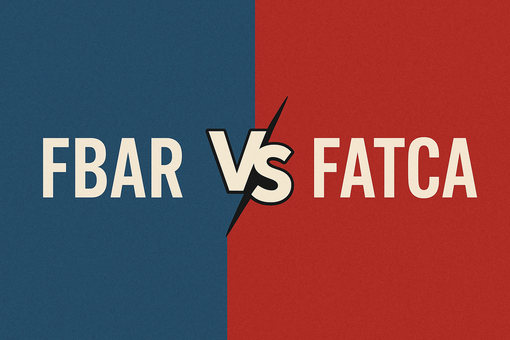Australian superannuation and US taxes: How your super fund is taxed

Working out your US tax obligations for Australian superannuation accounts can be complex for American expats or dual citizens. These mandatory retirement accounts create unique reporting challenges under US tax law because they don't automatically receive the same tax-advantaged treatment as American retirement plans. Understanding how the IRS views your superannuation is the key to proper tax compliance and avoiding costly penalties.
Key takeaways
- Australian superannuation is generally reportable on FBAR and Form 8938.
- The IRS may classify superannuation as either a foreign trust or pension plan.
- Proper reporting can help avoid significant penalties for non-compliance.
- Several amnesty programs exist if you've missed previous reporting requirements.
What is Australian superannuation?
Australian superannuation, commonly known as "super," is a mandatory retirement system established by the Australian government to help workers build funds for retirement. Unlike US Social Security, superannuation designates individual accounts for each worker, with balances that can be monitored, managed, and even accessed under certain circumstances.
Types of superannuation funds
Several types of superannuation funds are available to Australian workers:
-
Private funds
- Corporate funds: Established by employers specifically for their employees
- Industry funds: Run by employer associations for workers in specific industries
- Retail funds: Managed by financial institutions and open to everyone - Public funds: Generally available only to government employees
- Self-Managed Super Funds (SMSFs): Personally managed retirement accounts where the account holder serves as trustee and makes all investment decisions
How superannuation works
The Australian superannuation system operates through three key mechanisms:
- Contributions: Employers must contribute a percentage (currently 11%) of an employee's earnings to their superannuation account. This is called the Superannuation Guarantee (SG). Employees can also make voluntary contributions, either as pre-tax "salary sacrifice" or post-tax contributions.
- Growth: Superannuation funds invest contributions to generate returns over time. The earnings within the fund are taxed at a reduced rate in Australia (typically 15%), which is significantly lower than normal income tax rates.
- Withdrawals: Australians can generally access their superannuation when they reach their "preservation age" (between 55–60, depending on birth year) and retire or when they turn 65. Once a person is over 60 and retired, withdrawals are typically tax-free in Australia.
NOTE! While superannuation resembles American 401(k) plans in some ways, the mandatory nature of contributions and unique tax treatment create significant differences in how they're viewed under US tax law.
US Taxation of Australian Superannuation Funds
Let’s take a couple of examples to make it easier to understand in practice:
Example 1: Employer contributions
Scenario: An Australian employer contributes 11% of an employee's salary to their superannuation fund, with an additional 2% as a salary sacrifice.
US tax implication: The 11% Superannuation Guarantee (SG) might be excluded from US taxable income, but the additional 2% would be considered taxable income in the US.
Example 2: Withdrawals
Scenario: A US expat, aged 62, withdraws $50,000 from their Australian superannuation fund.
US tax implication: The withdrawal is tax-free in Australia, but the US may tax it as ordinary income. If the expat has been reporting and paying taxes on the superannuation growth annually, this could reduce the US tax liability.
Example 3: Foreign tax credits
Scenario: An expat has paid $5,000 in taxes within their superannuation fund over the years.
US tax implication: These taxes cannot be claimed as foreign tax credits in the US since they were not paid directly by the taxpayer. However, if the expat has other foreign income taxed in Australia, they might be able to claim foreign tax credits to offset US tax liability.
Example 4: Reporting requirements
Scenario: An expat has a Self-Managed Super Fund (SMSF) with $100,000 in assets.
US tax implication: The SMSF is considered a foreign grantor trust, requiring reporting on Form 3520/3520-A, FBAR, and Form 8938. However, recent IRS guidance might exempt certain foreign retirement accounts from these reporting requirements.
Does the IRS recognize Australian superannuation?
The IRS does not specifically recognize Australian superannuation in the same way that Australia does. This creates ambiguity that has led to various interpretations among tax professionals regarding how these accounts should be treated.
Classification under US tax law
The IRS may classify Australian superannuation in several ways:
- Foreign pension plan: Many tax professionals treat superannuation as equivalent to a foreign pension plan. However, unlike US-qualified retirement plans, foreign pensions don't automatically receive tax-deferred treatment under US tax law.
- Foreign trust: Some tax professionals argue that superannuation funds technically meet the IRS definition of a foreign trust because they involve a fiduciary relationship where trustees manage assets for beneficiaries. This classification carries significant reporting requirements.
- Hybrid classification: Some tax experts distinguish between employer contributions (similar to Social Security) and voluntary contributions (more like a traditional retirement account) for tax purposes.
Pro tip: The classification determination often depends on the specific superannuation type and level of control you have over investments and contributions.
Why superannuation is not covered by the US-Australia Tax Treaty
The US-Australia Tax Treaty was established in 1982 before the Australian superannuation system was fully developed (introduced in 1992). As a result:
- The treaty does not specifically address superannuation.
- No clear guidance exists on whether superannuation should be treated as a pension or social security equivalent.
- The treaty's saving clause allows the US to tax its citizens as if certain treaty provisions didn't exist.
While the treaty provides some protection for certain income types, the saving clause essentially allows the US to continue taxing its citizens on superannuation contributions, growth, and distributions despite any treaty benefits that might otherwise apply.
Impact on tax treatment and reporting requirements
Because the IRS doesn't automatically recognize superannuation as tax-deferred, US taxpayers face several consequences:
- potential taxation on employer contributions when made
- possible annual taxation on growth inside the superannuation account
- taxation on distributions (even though they may be tax-free in Australia)
- multiple complex reporting requirements
Here’s a good explanation: "One of the most complex aspects of international tax law is trying to apply foreign income tax rules and laws to the United States Tax Code. This becomes a major problem in matters involving pensions and other types of retirement plans sourced in a foreign country."
How US taxes apply to superannuation
Understanding the US Taxation of Australian Superannuation Funds requires examining how the IRS treats each phase of the superannuation lifecycle.
Contributions: Are employer and personal contributions taxable in the US?
Employer contributions
Unlike US retirement accounts, employer contributions to Australian superannuation are generally not tax-deferred for US tax purposes:
- The mandatory Superannuation Guarantee (SG) contributions from employers may be considered taxable income in the US when contributed.
- Some tax professionals argue that the SG portion functions similarly to Social Security and could potentially be excluded from US taxable income.
- There's no clear guidance from the IRS specifically addressing Australian superannuation contributions, leading to differing interpretations.
Voluntary contributions
For US taxpayers, the tax treatment of voluntary contributions depends on the type:
- Pre-tax contributions (salary sacrifice): These generally decrease taxable income in Australia but not in the United States.
- Post-tax contributions: These are made with funds that have already been taxed in the US.
Growth (investment earnings): How are earnings inside the super taxed?
The treatment of growth within superannuation depends on how the account is classified:
- If treated as a foreign grantor trust: Growth may be taxable annually as it accrues, even though you haven't received any distributions.
- If treated as a foreign non-grantor trust or pension: Growth might only be taxable when distributions are received.
A complicating factor is that in Australia, superannuation funds are taxed within the actual superannuation itself while it grows. Technically, since it's not the taxpayer paying these foreign taxes – these credits typically cannot be applied as foreign tax credits on your US return.
Withdrawals: When and how withdrawals are taxed under US law
Withdrawals from Australian superannuation accounts can trigger US tax consequences, even though such distributions are often tax-free under Australian law once certain conditions are met:
- In Australia, individuals over 60 who have retired can generally withdraw funds tax-free.
- US taxpayers must report and potentially pay taxes on these distributions as part of their worldwide income, regardless of the Australian tax treatment.
- The classification of the superannuation (whether as a pension or foreign trust) will impact how distributions are taxed in the US.
NOTE! This creates a potential double taxation scenario because there may be no Australian tax to offset the US tax liability through the foreign tax credit system.
Reporting requirements for US taxpayers with Australian superannuation
US taxpayers with Australian superannuation accounts must navigate several reporting requirements:
FBAR (FinCEN Form 114) requirements
You must report your superannuation on the Foreign Bank Account Report (FBAR) if:
- The combined value of all your foreign financial accounts exceeds $10,000 at any point during the calendar year.
- You must file electronically through FinCEN's BSA E-Filing System.
- The deadline is April 15th, with an automatic extension to October 15th.
FATCA considerations (Form 8938)
Form 8938 (Statement of Specified Foreign Financial Assets) is required if your foreign financial assets exceed certain thresholds:
- $200,000 on the last day of the tax year or $300,000 at any time during the year for single filers living abroad
- $400,000 on the last day of the tax year or $600,000 at any time during the year for married filing jointly living abroad
Form 3520 & 3520-A: When super funds might be considered foreign trusts
If your superannuation is classified as a foreign grantor trust:
- Form 3520-A is due March 15th (can be extended)
- Form 3520 is filed with your tax return
However, Revenue Procedure 2020-17 provides an exemption from Forms 3520 and 3520-A filing for certain foreign retirement accounts if:
- the trust is a retirement fund
- contributions are mandatory (e.g., by the employer or law)
- the taxpayer has limited control over the trust
What to do if you haven't reported your super on US taxes
If you've failed to report your Australian superannuation on past US tax returns, several programs can help you come into compliance:
-
Streamlined Filing Compliance Procedures (SFCP): For taxpayers whose failure to report was non-willful (not intentional)
- Streamlined Domestic Offshore Procedures (SDOP): For US residents who file timely returns but miss foreign reporting
- Streamlined Foreign Offshore Procedures (SFOP): For foreign residents, typically allowing original returns to be filed with penalties waived - Delinquent FBAR submission procedures: For taxpayers who only missed FBAR reporting but reported all income properly
- Voluntary Disclosure Program (VDP): For taxpayers whose non-compliance was willful or intentional
Pro tip: Avoid "quiet disclosure" (simply filing amended returns without entering a formal program), as this approach can lead to significant penalties if the IRS determines it was an attempt to circumvent proper disclosure procedures.
The penalties for non-compliance can be severe, including automatic $10,000 penalties per year for missed forms, making it essential to address any past reporting failures.
Simplify your US tax obligations – talk to an expert
Navigating the complex world of US taxation of Australian superannuation doesn't have to be overwhelming. Our team of experienced expat tax professionals can help you understand your reporting obligations, ensure compliance with US tax laws, and develop strategies to minimize your tax burden.
Unsure of every piece to be filed?
Get a free consultation with a tax pro!
Contact our experts today for personalized guidance on managing your Australian superannuation and US tax requirements. With our help, you can focus on building your retirement savings while staying compliant with all tax regulations.
FAQ
The IRS hasn’t clarified the classification of Australian superannuation funds, leading to varied treatments by tax professionals. Some view them as foreign pension plans, others as foreign trusts (especially self-managed super funds), due to greater control by the account holder.
Australian superannuation and US Social Security differ in tax treatment. The US doesn’t recognize superannuation’s tax-advantaged status, treating employer contributions as current taxable income for US citizens/residents, unlike Social Security contributions. Superannuation growth may be taxable annually, unlike the tax-deferred treatment of Social Security.
Yes, if your Australian superannuation account exceeds the reporting thresholds, you must report it on Form 8938. For US taxpayers living abroad, the threshold for single filers is $200,000 (last day of the tax year) or $300,000 (any time during the year). This doubles for married filing jointly ($400,000/$600,000). Failure to report can result in penalties starting from $10,000 per violation.
Early withdrawals from superannuation may face tax consequences in both Australia and the US. In Australia, these withdrawals incur additional taxes unless they meet specific hardship/compassionate grounds. For US tax purposes, they are taxable as ordinary income. And if you’re under age 59 you may face a 10% early withdrawal penalty, so always consult an expat tax professional before making early withdrawals.



